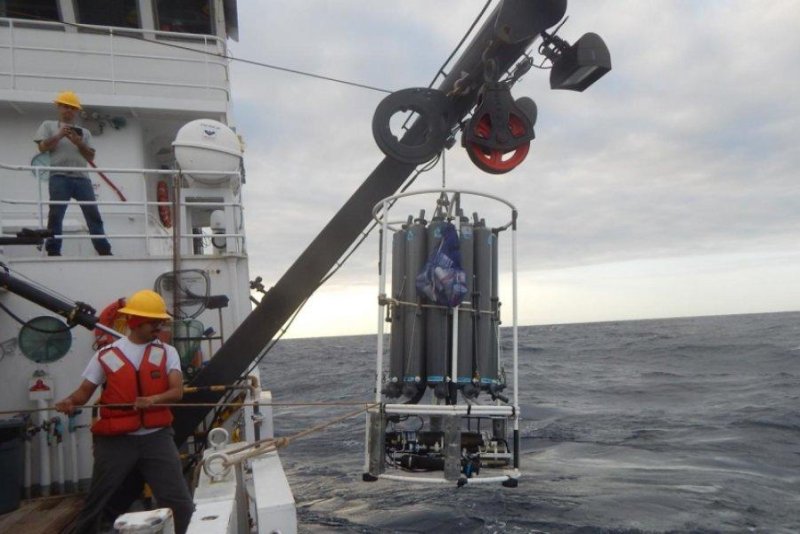Scientists were able to plot the ancient variability of the Atlantic Ocean surface circulation using sediment cores collected from the Gulf of Mexico. Photo by Caitlin Reynolds/USGS
Jan. 26 (UPI) -- Climate scientists have discovered a link between Atlantic Ocean currents and rainfall patterns in the Western Hemisphere. Evidence of the correlation extends from the present back several thousand years.
"The mechanisms that seem to be driving this correlation [in the past] are the same that are at play in modern data as well," Kaustubh Thirumalai, postdoctoral researcher at Brown University, said in a news release. "The Atlantic Ocean surface circulation, and however that changes, has implications for how the rainfall changes on continents."
Thirumalai, lead author of the new Nature Communications study, conducted the research while earning his PhD at the University of Texas Institute for Geophysics.
The Atlantic Ocean surface circulation moves warm water from the tropics to the poles, driving a number of global climate patterns. Scientists were able to model the historic nature of the circulation after analyzing several sediment cores collected from the Gulf of Mexico.
The analysis allowed researchers to identify the factors affecting the strength of the circulation over the last 4,300 years. Scientists plotted changes across a timescale divided into increments of 30 years.
"If we go back in increments of 30, we're well positioned to understand things on the order of centuries," Thirumalai said. "And the question we decided to ask was what can those reconstructions of temperature and salinity tell us about the greater Atlantic Ocean surface circulation."
The Gulf of Mexico is rich in sediment. Inside the layers of ancient sediment are the remains of foraminifera, microorganisms that live on the ocean floor. The tiny fossils helped scientists estimate the salinity and temperature in the ocean during each 30-year period.
Researchers showed the circulation was weakest during the Little Ice Age, a period of cooling between 1450 and 1850 thought to have been triggered by a spate of significant volcanic eruptions.
To see whether there was a link between the circulation and rainfall, scientists compared the data from the sediment cores with historic precipitation estimates measured using tree rings and cave deposits. The analysis revealed a historic link between the circulation and precipitation. The correlation is consistent across different time scales.
"It was remarkable," Thirumalai said. "These patterns that are based on decadal analysis of modern data, and then the hydroclimate proxies that give the salinity in the oceans and the rainfall on land seem to show the same picture."
Scientists suggests the correlation can be used to more accurately predict how climate change will impact ocean circulation and precipitation patterns in the Western Hemisphere in the future.















